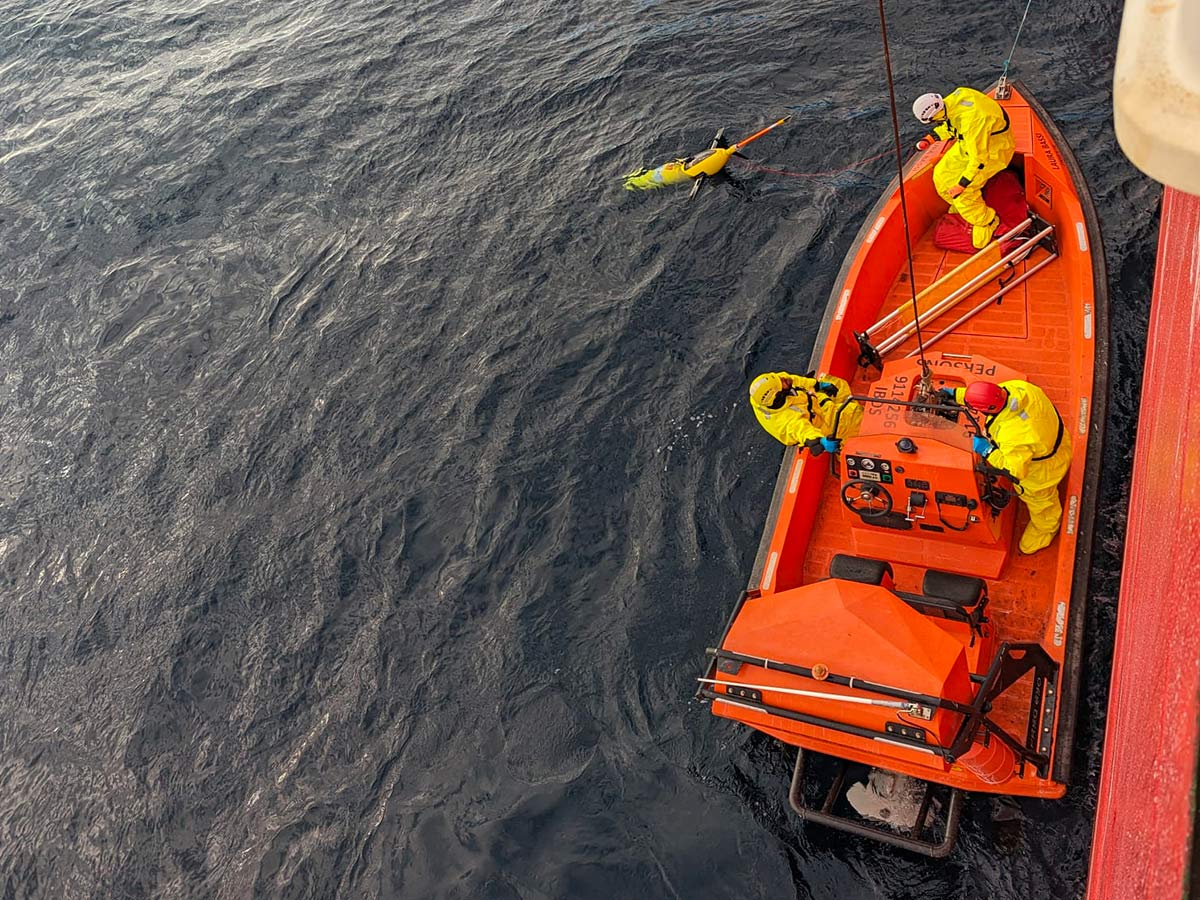
OGS gliders from the Adriatic to the Antarctic
In recent weeks, two of the OGS gliders have been used for research work carried out simultaneously in two different and geographically distant seas: the southern Adriatic and the Ross Sea in Antarctica.
The first glider was launched in the Ross Sea in Antarctica as part of the PNRA Signature project to study the climate changes induced by the melting of the southern polar ice cap in the Ross Sea. The changes recorded during the 39 Italian campaigns of the National Antarctic Research Programme (PNRA) concerned the temperature, salinity, density and currents of the Antarctic waters. The glider data were added to the conventional data, allowing larger areas to be covered and providing high-resolution data in an area of critical importance for a scenario of accelerated mass loss of the Antarctic ice sheet with potentially large impacts on the global ocean.
After 15 days in polar waters, the glider was recovered by personnel on board the icebreaker Laura Bassi and will return to Italy in the coming months.
During the same period, a second instrument was deployed in the waters of the southern Adriatic, one of the convection areas in the Mediterranean where the OGS has been carrying out research and monitoring activities for more than 10 years; the gliders contribute to the study of marine conditions and physical processes in this area.
The instrument is currently still in the area and will continue to transmit very important data over the next two weeks for the study of the characteristics of the water masses and the extent of their annual fluctuations.
Gliders are instruments that provide valuable data for scientific research at a high resolution, which have made it possible to explain in detail the processes that regulate the mixing of the surface in the areas where the dense water that oxygenates the deepest areas of the Mediterranean is formed, allowing a better understanding of small-scale processes that could not be studied before.
